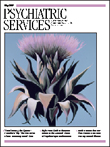Lessons in Taxidermy
I had read nearly half of Bee Lavender's Lessons in Taxidermy before I began to suspect that I was being had. I had gotten to the part where the author relates a horrific car accident. Her first-person prose never blinks when describing the event—how, at 16 years old, she had been behind the wheel as one friend "lost her forehead" and another suffered a broken spine, while she herself had a broken collarbone, pelvis, and ribs; nerve injuries in her extremities and face; damaged hearing; and a lost sense of smell.
Lavender's 160-page book is not labeled fiction or nonfiction, but one is encouraged to assume that the work is a memoir by a note explaining that the names have been changed. The book is somewhat overwritten but has a distinct style that grabs your attention right away. The protagonist is a young mother of two, who at the book's start is hospitalized with a severe pain in her abdomen that is proving difficult to diagnose. Alternating chapters use flashbacks to bring her life story to the present.
I was interested early on and read with awe about a 12-year-old girl who struggles, without tears or fear and a maturity beyond anyone's years, with thyroid cancer, cysts in her jaw that require reconstructive surgery, malnutrition, and a ruptured appendix that includes a septic infection. Within a year the cancer in her neck recurs. She is diagnosed with skin cancer and hundreds of skin tags are removed from her body. By age 14 she has developed acute anemia and has surgery to correct double vision.
Like most other therapists, I have learned the value of a healthy skepticism. I take personal histories prepared to later find that something I'm told will turn out to be exaggerated or flatly not true. As I got further along in Lessons in Taxidermy , reading her account of one heroic victory after another, I found myself starting to diagnose Ms. Lavender with histrionic personality disorder. As a clinician who works with adolescents, I found it impossible not to wonder how someone so damaged—scarred, literally and figuratively, and traumatized by illness and accident—could seem so mature and without a psychological impediment. The narrative contains two references to therapy, which our heroine had turned from with disdain.
To offset my growing doubt, I attempted to visit the author's website, only to learn that it is under construction—in Italian. I do think that Ms. Lavender has talent—her writing evokes a special mood that does not waver. Yet whether this book is truth or fiction, it sadly lacks believability. If true, the volume could be taken seriously only by grounding the narrative in specific details of place and time. If fiction, Lavender should have it explained to her how, with her writing ability, she could have told a more compelling story with greater character development and only one disease.



